Genus: Weigeltisaurus KUHN, 1936
Etymology: In honor of Weigelt, who first described the specimen (Palaeochamaelo),
and Greek, sauros, "lizard."
= Gracilisaurus WEIGELT, 1930
Etymology: Latin, gracilis, "pretty" and Greek, sauros, "lizard."
= Palaeochamaeleo WEIGELT, 1930 non DE STEFANO, 1903 (Palaeochamaeleo europaeus Agamidae)
Etymology: Greek, palaios, "ancient" and Chamaelo, in reference
to the modern Chameleon lizard.
Species: jaekeli (WEIGELT,
1930) KUHN, 1936
Etymology: In honor of O. Jaekel who
prepared the specimen after it was brought to him in 1913.
= Palaeochamaeleo jaekeli WEIGELT, 1930
= Coelurosauravus jaekeli (WEIGELT, 1930) EVANS & HAUBOLD, 1987
Holotype: SSWG 113/7
Locality: Former Wolsberg mine near Berbra-Iba (Mansfield Mining District), Hesse State, North-west Germany.
Horizon: Werra Formation.
Biostratigraphy:
Age: Kupferschiefer, Irenian Supstage, Kungurian Stage, Uppermost Rotliegendes Epoch, Middle Permian.
Material: Skull, forelimbs, vertebrae, 1 hind limb, ribs and ossified sticks of the flying membrane.
Left, right pes in dorsal view and right left femur and proximal crus (after EVANS & HAUBOLD, 1987).
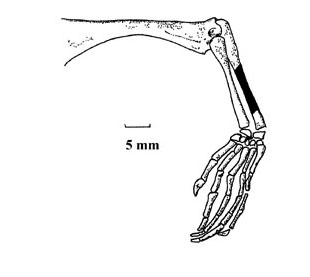
Hind leg after EVANS & HAUBOLD, 1987.
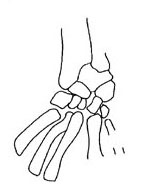
Pes after EVANS & HAUBOLD, 1987.
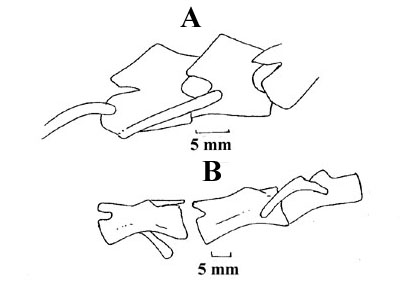
A), cervical vertebrae; B) mid-dorsal vertebrae. (After EVANS & HAUBOLD, 1987).
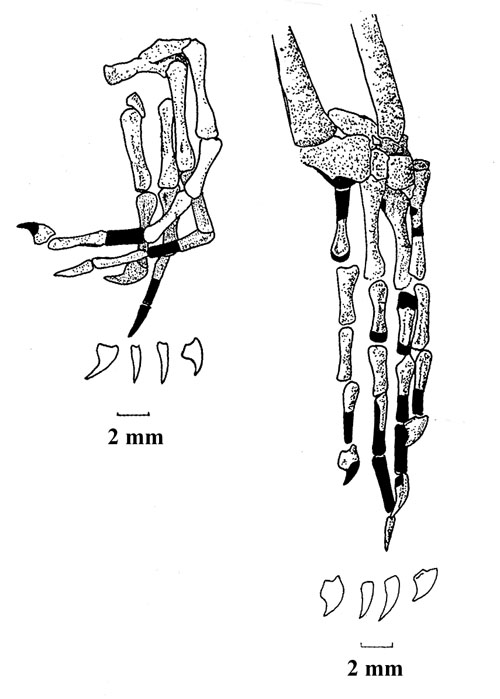
A) right hind foot; B) left hind foot. (Modified after EVANS, 1982).
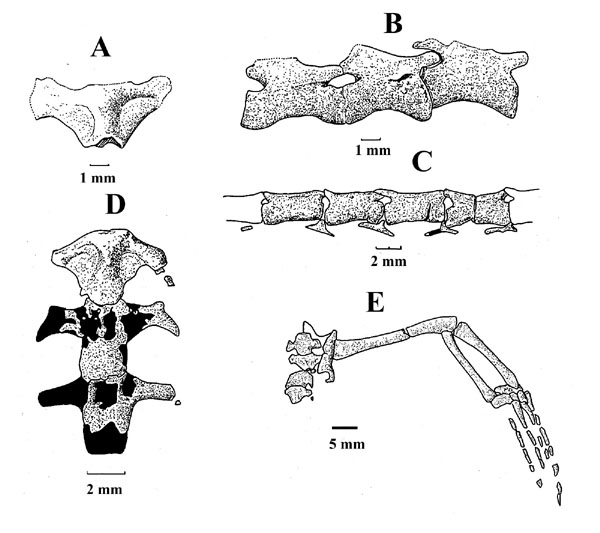
A) Second scral vertebra in dorsal view; B) a series of 3 posterior dorsal vertebrae in lateral view; C) ventral view of 3 anterior caudal vertebrae; D) a series of mid-caudal an dassociated chevrons in lateral view; E) left hind limb. (Modified from EVANS, 1982).
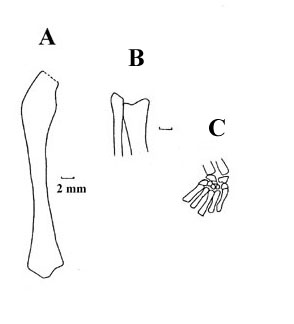
A) left femur; B) proximal left crus; C) left carpus. (After EVANS & HAUBOLD, 1987).
Referred material:
EVANS, 1982
Locality: Eppleton Quarry, Tyne and Wear County, North-east England.
Horizon: Marl Slate Formation.
Biostratigraphy:
Age: Ufimian-Lowest Kazanian Stage, Lower-Middle Guadelupian Stage, Lowermost Zeichistein Epoch, Late Permian.
Material:
TWCMS B.5937.1: Fragmentary skeleton.
Counter block: TWCMS B.5931.2: Fragmentary skeleton.
FREY, SUES & MUNK, 1997
Locality: Ellirch, Thuringa, Thuringian State, Germany.
Horizon:
Biostratigraphy:
Age: Kupferschiefer, Irenian Supstage, Kungurian Stage, Uppermost Rotliegendes Epoch, Middle Permian.
Material:
SMNK 2882 PAL: Nearly complete skull and skeleton.
SCHAUMBERG, 1976
Locality: Wolfsberg, Lower Saxony State, Germany.
Horizon:
Biostratigraphy:
Age: Kupferschiefer, Irenian Supstage, Kungurian Stage, Uppermost Rotliegendes Epoch, Middle Permian.
Material:
Number: Munk Collection, Schwalmstadt: Skull and fragmentary skeleton.
Locality: Cornberg, Hesse State, Germany.
Locality:
Biostratigraphy:
Age: Kupferschiefer, Irenian Supstage, Kungurian Stage, Uppermost Rotliegendes Epoch, Middle Permian.
Material:
Number: Simon Collection, Bauhaus: Fragmentary skeleton.
SCHAUMBERG, 1986
Locality: Bodental, North Hesse, Hesse State, Germany.
Horizon:
Biostratigraphy:
Age: Kupferschiefer, Irenian Supstage, Kungurian Stage, Uppermost Rotliegendes Epoch, Middle Permian.
Material:
Number: Buger Collection, Bad Hersfeld: Fragmentary skeleton.
= Gracilisaurus ottoi WEIGELT, 1930
Etymology: In honor of Professor Otto, a local geologist, who found the specimen in the discarded slate heaps of the Otto-Schacht coalmine, and donated it to the collection of the Geologisch-Paläontologische Institut at Halle; it was labeled Protorosaurus speneri.Holotype: GM 1462
Locality: Mansfield Mining District, Sachsen-Anhalt State, North-west Germany.
Horizon: Werra Formation.
Biostratigraphy:
Age: Kupferschiefer, Irenian Supstage, Kungurian Stage, Uppermost Rotliegendes Epoch, Middle Permian.
Material: Right hind limb, 6 caudal vertebrae and rib fragments.
After EVANS & HAUBOLD, 1987.
Right tarsus (modified from EVANS & HAUBOLD, 1987).
_____________________________________________________________________________________